A billable hours chart helps law firms accurately track time spent on client work and ensures precise billing. In this guide, we will explore how to use a billable hours chart effectively to improve productivity and client satisfaction, along with practical examples and tips.
Key Takeaways
- An attorney billable hours chart standardizes time increments, improving billing accuracy and client satisfaction while reducing stress and enhancing cash flow.
- Utilizing time tracking software is essential for accurate billing and can significantly boost law firm revenues by capturing all billable hours effectively.
- Implementing ethical billing practices and clear communication about billing standards fosters trust with clients and minimizes disputes.
The Role of Billable Hours for Attorneys Working on Contingency
While many attorneys, especially those in personal injury and similar fields, work on contingency fees rather than hourly billing, tracking billable hours remains important for several reasons. First, tracking billable hours helps contingency attorneys understand the true time investment required for each case. This insight is crucial for managing workload, allocating resources efficiently, and deciding which cases to accept based on potential profitability. Without tracking time, attorneys risk taking on cases that consume excessive hours without adequate return, leading to lost annual revenue and reduced firm profitability.
Second, detailed time records support internal firm management and financial planning. Knowing how many hours are spent on various case types enables better forecasting and budgeting, which is important for sustaining a legal practice that relies heavily on contingency fees.
Third, some contingency cases may involve mixed billing arrangements, where certain tasks are billed hourly (such as expert consultations or court appearances), while the overall case is contingency-based. In these situations, precise time tracking ensures accurate invoicing and reimbursement for billable tasks.
Finally, maintaining thorough records of time spent on contingency cases can be important for transparency and client communication. It helps attorneys justify their fee percentages and demonstrate the effort invested in the case, fostering trust and minimizing disputes. Even though contingency fees differ from hourly billing, using a billable hours chart and time tracking software remains a valuable practice for attorneys in the legal profession working on contingency. It supports maximizing billable hours, managing non-billable work, and ultimately improving the financial health of the law firm.
Understanding the Attorney Billable Hours Chart
An attorney’s billable hours chart is an essential tool that converts task durations into standardized billing increments. This chart is pivotal for law firms as it streamlines time entries, supports accurate billing, and enhances financial reporting. An organized lawyer billable hours chart helps firms keep invoices neat, standardized, and precise in detailing client costs. Accurate tracking of billable hours leads to less stress, better cash flow, and happier clients.
The primary purpose of an attorney’s billable hours chart is to standardize increments and ensure accurate conversion of minutes to tenths of an hour. This standardization is crucial for maintaining consistent billing practices and avoiding discrepancies. On average, lawyers bill 1,693 hours annually, and understanding this helps firms set realistic goals and manage their total billable hours effectively.
A billable hours chart enhances productivity, improves cash flow, and increases client satisfaction. It provides a clear framework to calculate billable hours by converting task durations into billable increments, ensuring that every minute of billable work is accounted for accurately.
Why 6-Minute Increments Matter
Six-minute increments are the standard time increment used in attorney billing charts. This system allows attorneys to capture brief tasks accurately without underbilling clients. Key points include:
- A phone call lasting five minutes can be billed as 0.1 hours, ensuring even the shortest tasks are accounted for.
- This level of precision helps in maximizing billable hours.
- It also maintains transparency with clients.
Many law firms traditionally use 15-minute increments for billing, but this can lead to undercharging for short activities. A six-minute increment system ensures fair billing practices for both attorneys and clients. This method not only promotes accurate billing but also fosters trust and satisfaction among clients.
Calculating Billable Hours Accurately
Accurate timekeeping is crucial for maintaining ethical billing and preventing over or undercharging clients. Inaccurate time tracking can lead to lost billable hours and reduced profitability for law firms. Maintaining accurate invoices is a professional responsibility for lawyers, aimed at avoiding accusations of overcharging. Clear communication about billing practices is essential to prevent disputes and ensure client trust.
Time increments on attorney billing charts are typically rounded in tenths, aiding in precise billing for various durations. Adhering to standardized time increments ensures consistent and transparent billing practices for law firms. This not only helps in tracking billable hours accurately but also enhances the overall efficiency of the billing process.
Using Time Tracking Software
Time tracking software assists in capturing billable hours accurately, mitigating missed billable time and improving overall billing practices. Modern time tracking software automatically tracks billable activities, allowing users to set running clocks and generate invoices efficiently. This automation reduces the reliance on manual methods, which are prone to errors and inefficiencies, helping to track time accurately.
Time tracking software can potentially generate substantial additional revenue for law firms, estimated at around $22,425 annually. Some recommended tools for efficient time tracking include Asana, QuickBooks Time, and ClickUp.
These tools not only enhance the accuracy of billing but also streamline the overall billing process, ensuring that all billable time is accounted for.
Avoiding Common Mistakes
Manual time entry can lead to efficiency and accuracy issues, such as human memory errors and lost time. A major drawback of manual time entry for lawyers is its reliance on human effort and memory. Specific issues include:
- If billable hours are not tracked immediately, reliance on memory can lead to inaccuracies and incorrect invoices.
- Delaying time entries can result in a 10-15% undercounting if recorded at the day’s end.
- Delays of up to a week can cause up to a 50% loss in recorded time due to manual calculations.
Tracking billable hours in real-time prevents inaccuracies and missed revenue opportunities. Contemporaneous time entry eliminates revenue loss from delayed entries. Not logging tracking hours regularly can lead to losing nearly 2 hours of billable time each week.
Poor time tracking practices can allow for a loss of 10-50% of potential billable hours.
Best Practices for Managing Billable Hours
Adopting legal time-tracking software can enhance billing efficiency and accuracy significantly. Modern time-tracking tools automate functions and reinforce ethical standards, safeguarding against revenue loss. Firms that invest in integrated time and billing software report a clear return on investment. Establishing a clear billing policy can help set client expectations and reduce the chances of billing disputes.
Building good habits and using the right tools are essential principles for effective management of billable hours. Implementing a comprehensive strategy that incorporates client relations, performance improvement, and financial management can lead to an increase in billable hours.
Staying focused during billable hours is critical for maximizing revenue and reducing procrastination. Lawyers need to balance client service, workload, and work-life balance when managing their billable hours to maximize billable hours.
Real-Time Time Entry
Failing to log billable work daily can lead to losing nearly 2 hours weekly. The recommended frequency for recording time entries is real-time or daily. Record time immediately to prevent loss of key billable hours. By capturing time entries as they occur, attorneys can ensure that all billable work is accurately recorded and billed in record time.
Real-time time entry helps in maximizing billable hours by reducing the chances of overlooking billable tasks. This practice also improves cash flow by ensuring that invoices are accurate and timely. Integrated time tracking tools can further enhance this process by automating time entries and reducing administrative burdens.
Detailed Time Entries
Including clear descriptions in billing can enhance transparency and help avoid misunderstandings with clients. Maintaining detailed time entries is crucial for ensuring transparency in legal billing. By providing specific and clear billing descriptions, attorneys can foster better relationships with clients and reduce confusion.
Accurate and detailed time entries significantly reduce the likelihood of client disputes regarding billing. This practice ensures that clients understand what they are being charged for, which builds trust and satisfaction. Utilizing automated time tracking tools can help in maintaining detailed records without additional effort.
Regular Audits
Periodic checks related to time entries and billing include:
- Checking time entries to reveal inconsistencies and guide improvements in billing accuracy.
- Monitoring non-billable hours to identify inefficiencies that, when addressed, can enhance overall productivity.
- Conducting regular audits of billable hours to identify discrepancies that may arise during the billing process.
Such audits ensure that billing practices remain accurate and ethical.
The Role of Non-Billable Hours
Non-billable hours include administrative tasks, firm meetings, continuing legal education, and business development activities. Factors contributing to high non-billable hours include low-value jobs, distractions, and procrastination. A high amount of non-billable hours signals the need to reevaluate processes and consider time-saving software. Monitoring non-billable hours helps identify non-billable activities that can be automated or delegated more productively.
Lawyers can lose 2-3 hours daily to non-billable activities, adversely affecting profitability. Understanding the difference between billable and non-billable time is important to maximize revenue. By tracking and managing non-billable tasks, law firms can improve their overall efficiency and profitability.
Tracking Non-Billable Tasks
It is important to track non-billable hours to understand time allocation and improve business decisions. Firms may lose a significant portion of potential billable hours, ranging from 10% to 50% because of inadequate time tracking. Guidelines for distinguishing between billable and non-billable work help in tracking and managing different types of work. Examples of non-billable tasks include:
- Invoicing
- Client meeting scheduling
- Closing files
- Managing timesheets.
Accurate tracking of non-billable tasks helps law firms identify inefficiencies and areas for improvement. This practice helps in making informed business decisions and optimizing the allocation of resources.
Automating Non-Billable Work
Benefits of automating non-billable work include decreased non-billable hours and increased invoice accuracy. Automating non-billable work allows law firms to increase revenue by focusing more on billable hours. Outsourcing non-billable tasks leads to increased efficiency, cost savings, and improved productivity.
It is recommended to outsource non-billable tasks to allow legal professionals to concentrate on client work. Automating non-billable work helps law firms increase efficiency and allows a greater focus on billable hours in their legal practice.
Overall, automating and outsourcing non-billable work can significantly enhance a law firm’s revenue and operational productivity.
Leveraging Legal Billing Software
Legal billing software can significantly reduce the time law firms bill for their billing processes, often taking it down to under an hour per month. Many attorneys report that without billing software, the manual entry of data across multiple formats leads to inefficiencies and errors. When accepting payments via credit cards, law firms should also be aware of credit card processing fees. Legal billing software:
- Manages cases
- Tracks billable hours
- Generates invoices
- Analyzes financial performance
The software often includes financial reporting, monitoring invoices, insight into payments, and tracking active payment plans. Software like QuickBooks Time offers features such as tracking time spent in court, on the phone, or in meetings, and generating invoices automatically.
Legal billing software simplifies tracking and ensures compliance with the modern legal billing software billable hours chart, utilizing the billable hour system and legal practice management software.
Features to Look For
When selecting legal billing software, it’s essential to evaluate:
- How well it integrates with existing tools
- Its automated billing features
- Customization of invoices
- Reporting capabilities, which are key features that users find valuable
These features ensure that the software meets the specific needs of the law firm, enhancing overall efficiency and accuracy.
Ethical Billing Standards
Maintaining ethical billing standards is crucial for building trust and avoiding disputes with clients. Key points include:
- Lawyers must avoid billing practices perceived as deceptive, such as double-billing and inflating billable hours.
- According to ABA Model Rule 1.5, legal fees must be reasonable.
- The rule also requires the maintenance of accurate and contemporaneous time records.
- A downside of block billing is that it can lead to overcharging clients.
- Reliance on manual entry in attorney billing can result in underbilling, ethical dilemmas, and client dissatisfaction.
Ethical billing practices not only comply with professional standards but also enhance client satisfaction and trust. Adhering to these standards ensures transparent and fair billing practices for law firms. This fosters long-term client relationships and reduces the likelihood of billing disputes.
Avoiding Block Billing
Block billing, where multiple tasks are combined into a single entry, can raise suspicions and lead to client disputes. Itemized billing allows clients to see precisely what they are being charged for, enhancing transparency. Detailed billing practices are essential for maintaining client trust and satisfaction.
Avoiding block billing and maintaining detailed time entries ensures accurate billing and reduces the risk of disputes. This practice not only promotes transparency but also helps in maintaining ethical billing standards.
Transparent Client Communication
Clear communication regarding billing practices is essential to decrease client complaints and recover all calculated billable hours. Billing descriptions for clients should be succinct, detailed, and free of jargon to ensure client understanding. Failing to provide clear billing descriptions can result in billing disputes and wasted business time.
In billing for client phone calls, attorneys should include a brief description of the content and importance of the call.
Maximizing Billable Hours Without Burnout
Most attorneys are expected to bill between 1,700 and 2,300 hours each year. Implementing effective time management strategies can enhance productivity and reduce stress. Maintaining a good work-life balance is crucial to preventing burnout among lawyers.
Adopting these strategies helps lawyers maximize their billable hours while safeguarding their mental health.
Setting Realistic Targets
Establishing achievable daily and annual billable hour goals helps in maintaining attorney work hours and avoiding burnout. Burning out attorneys is counterproductive and can negatively affect overall productivity. Lawyers should aim for approximately 8 billable hours daily to maintain a balanced workload, and if necessary, they may need to consider taking on more hours.
The general annual billable hour target for lawyers is set at 1,800 hours. By implementing these targets, law firms can enhance productivity while safeguarding attorney well-being.
Encouraging Breaks and Downtime
Taking regular breaks can dramatically improve both mental health and productivity in legal professionals. Integrating short pauses during work can enhance focus and efficiency, leading to more effective legal service.
Setting achievable billable hour targets helps to maintain a healthy work-life balance and reduces the risk of burnout, aligning with more billable hours and billable hour expectations.
Partnering with Walker Advertising for Growth
By using an attorney billable hours chart, leveraging legal billing software, and maintaining transparency with clients, law firms can enhance their efficiency and client satisfaction. Implementing these strategies will ensure that your law firm operates at peak efficiency while maintaining ethical standards.
Partnering with Walker Advertising can help further drive growth and revenue. Walker Advertising provides law firms with pre-screened leads through various marketing channels, helping them find actionable clients. The leads provided by Walker Advertising are tailored to meet specific firm needs, reducing irrelevant inquiries.
We equip law firms to thrive in the competitive digital marketing landscape. Leveraging our 40+ years of expertise allows law firms to focus on delivering exceptional legal services while we manage your law firm’s lead generation.
Frequently Asked Questions
What is a billable hours chart for lawyers?
A billable hours chart for lawyers is a reference tool that standardizes the conversion of time spent on tasks into billable units, typically using increments of 6, 10, or 15 minutes. This ensures accurate billing and facilitates clearer invoicing for clients.
Why are six-minute increments important in an attorney’s billable hours chart?
Six-minute increments are crucial for accurately capturing brief tasks, promoting fair billing practices for both attorneys and clients. This standardization ensures transparency and maximizes billable hours.
What are some recommended tools for time tracking in law firms?
For effective time tracking in law firms, consider using Asana, QuickBooks Time, and ClickUp, as they facilitate accurate capture of billable hours and streamline invoice generation.
How can law firms manage non-billable hours effectively?
To effectively manage non-billable hours, law firms should track these tasks, automate administrative work, and consider outsourcing non-billable activities. This approach minimizes non-billable time and enhances focus on generating billable hours.
What are the benefits of using legal billing software?
Using legal billing software significantly streamlines billing processes, improves time tracking, and enhances compliance with billing standards. Ultimately, it allows legal professionals to focus more on their cases and clients rather than on administrative tasks.






